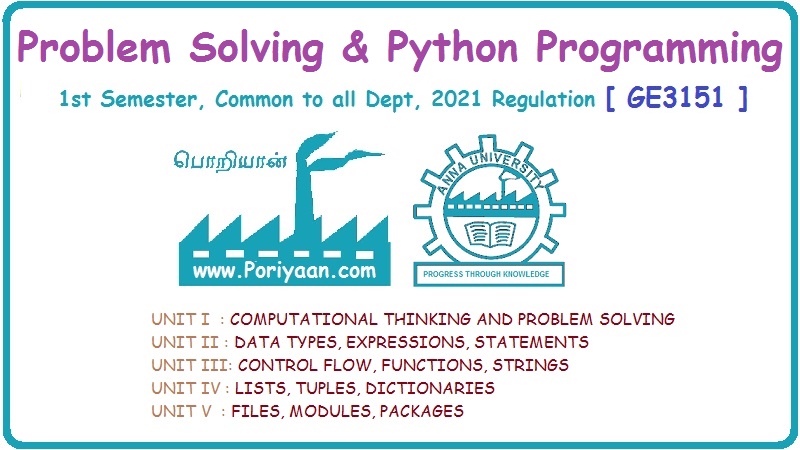Problem Solving and Python Programming: UNIT III: Control Flow, Functions, Strings
Conditional Statements
Flow Chart, Syntax, Example Program | Python Programming
There are various types of conditional statements - i) if statements ii) if-else or alternate statements iii) nested if iv) chained conditionals
Conditional Statements
AU
: Dec 19,Marks 16
There
are various types of conditional statements -
i)
if statements
ii)
if-else or alternate statements
iii)
nested if
iv)
chained conditionals
1. if statement
The
if statement is used to test particular condition. If the condition is true
then it executes the block of statements which is called as if block.

The
if statement is the simplest form of the conditional statement.
Syntax
:
if
condition:
statement
Example
if
a < 10:
print("The
number is less than 10")
Example
3.4.1 Write a Python program to check whether given
number is even or odd.
Solution
:

2. Alternative Statements
•
The if-else statement provides an else block combined with the if statement
which is executed in the false case of the condition. The flowchart for if-else
is

Syntax
if
condition :
else
:
statement
statement
•
If the condition is true, then the if-block is executed. Otherwise, the
else-block is executed.
ifelseDemo.py
print("Enter
value of n")
n
= int(input()) if n%2==0:
print("Even
Number")
else:
print("Odd
Number")

3. Nested if Statements
When
one if condition is present inside another if then it is called nested if
conditions. Any number of these statements can be nested inside one another.
Indentation is the only way to figure out the level of nesting.
Example
3.4.2 Write a python program to compare two numbers
using nested conditionals,
Solution
:
NestedIfDemo.py
print("Enter
value of a")
a
= int(input())
print("Enter
value of b")
b
= int(input())
if
a= =b:
print("Both
the numbers are equal")

else:
if
a<b:
print("a
is less than b")
else:
Nested
if-else
if
a>b:
print("a
is greater than b")
Output
Enter
value of a
20
Enter
value of b
10
a
is greater than b
>>>
4. Chained Conditionals
Sometimes
there are more than two possibilities. These possibilities can be expressed
using chained conditions. The syntax for this is as follows
if
condition:
Statement
elif
condition:
Statement
…
else:
Statement
•
The chained conditional execution will be such that each condition is checked
in order.
•
The elif is basically abbreviation of else if.
•
There is no limit on the number of elif statements.
•
If there is else clause then it should be at the end.

•
In chained execution, each condition is checked in order and if one of the
condition is true then corresponding branch runs and then the statement ends.
In this case if there are any remaining conditions then those condition won't
be tested.
Example
3.4.3 Write a python program to display the result
such as distinction, first class, second class, pass or fail based on the marks
entered by the user.
Solution
:
print("Enter
your marks")
m
= int(input())
if
m > = 75:
print("Grade
: Distinction")
elif
m > = 60:
print("Grade
: First Class")
elif
m > = 50:
print("Grade
: Second Class")
elif
m > = 40:
print("Grade:
Pass Class")
else:
print("Grade
: Fail")
Output
Enter
your marks
45
Grade
: Pass Class
Example
3.4.4 Write a python program to find the largest among
the three numbers.
Solution
:

Output

Review Question
1. Explain three types of conditional statements.
AU : Dec 19, Marks 16
Problem Solving and Python Programming: UNIT III: Control Flow, Functions, Strings : Tag: Engineering Python : Flow Chart, Syntax, Example Program | Python Programming - Conditional Statements
Related Topics
Related Subjects
Problem Solving and Python Programming
GE3151 1st Semester | 2021 Regulation | 1st Semester Common to all Dept 2021 Regulation
